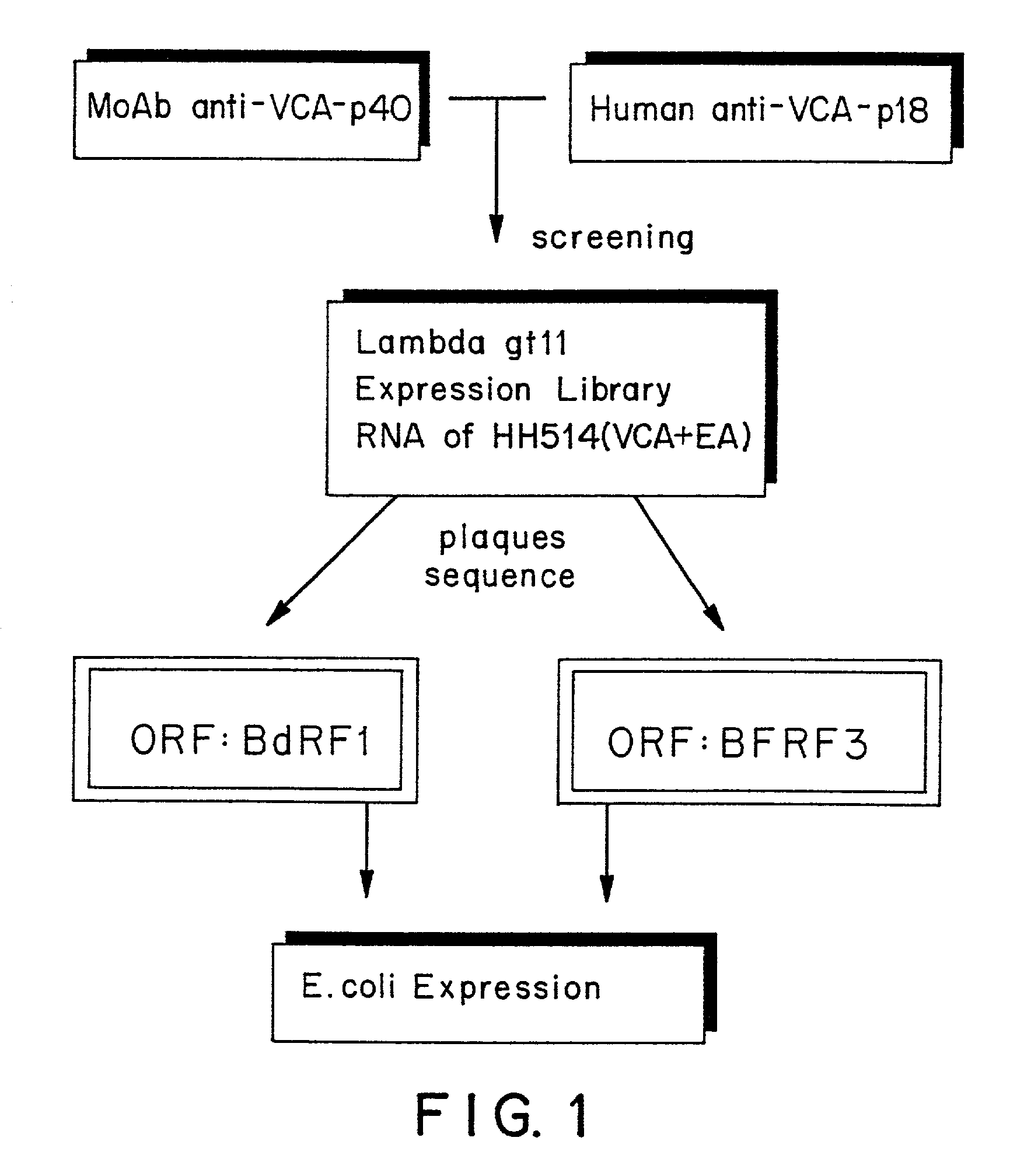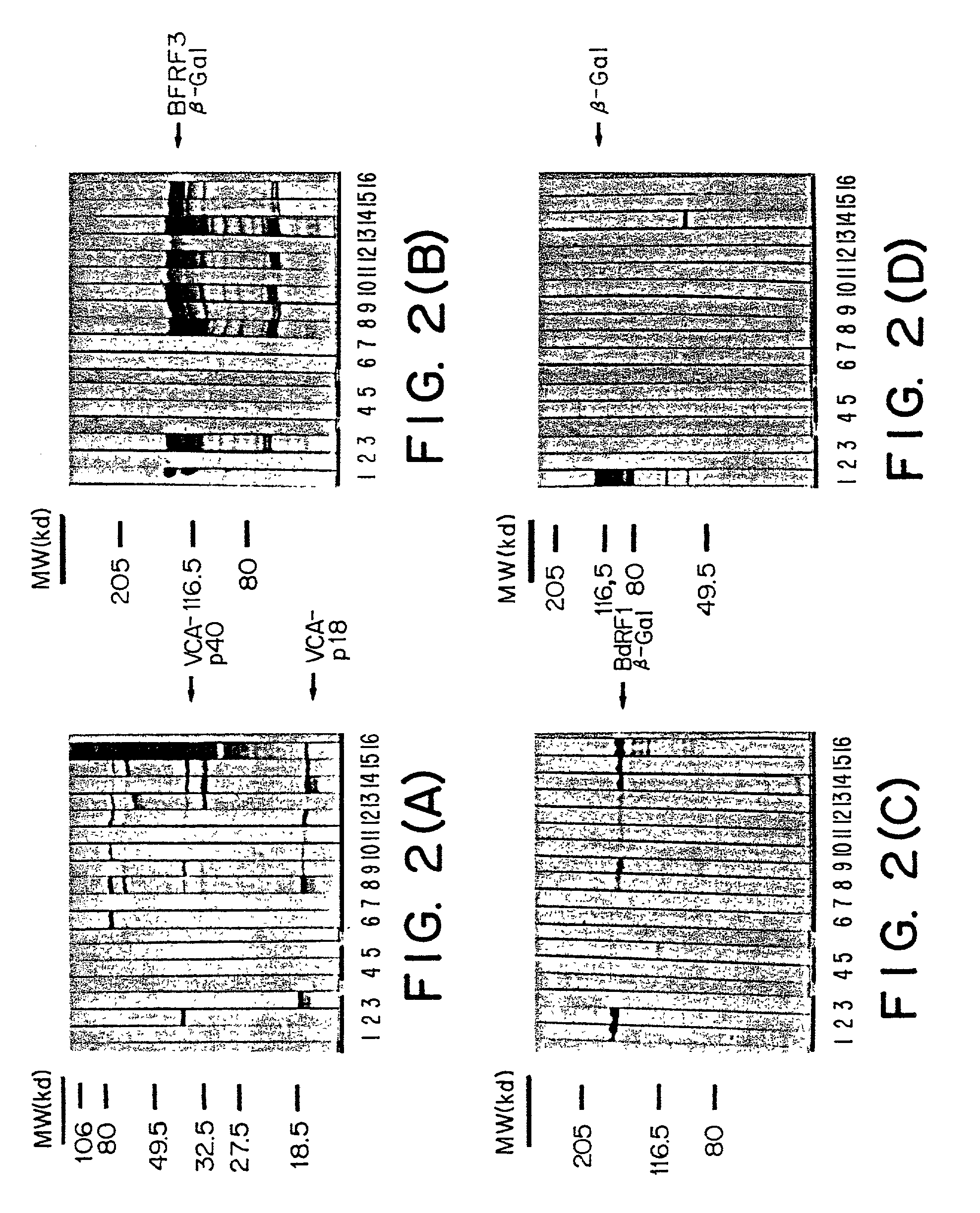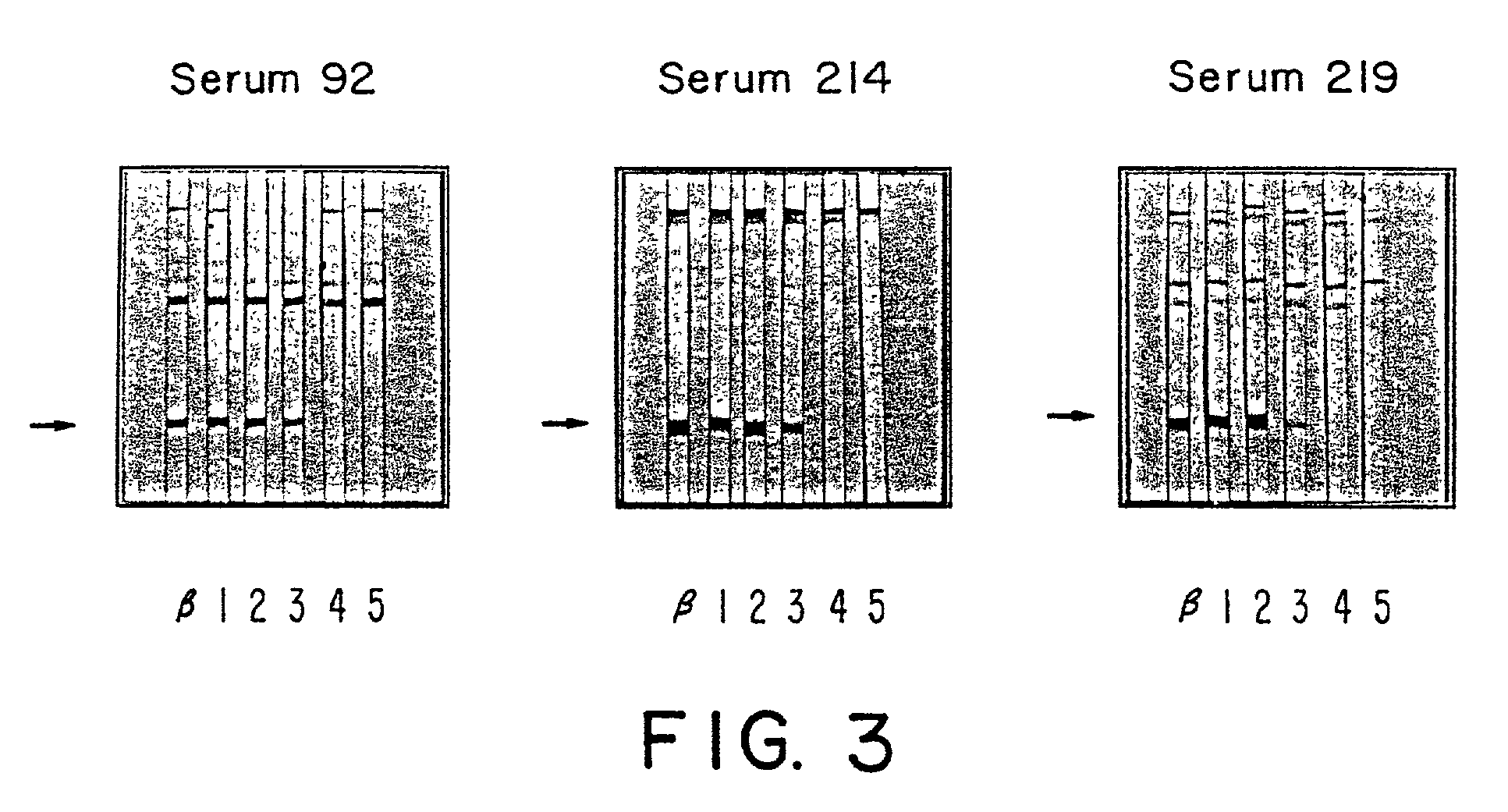Peptides and nucleic acid sequences related to the Epstein Barr Virus
a nucleic acid sequence and epstein barr virus technology, applied in the field of peptides and nucleic acid sequences related to the epstein barr virus, can solve the problems of lymphoproliferation disease, epithelial replication of the virus, and full-blown malignancy
- Summary
- Abstract
- Description
- Claims
- Application Information
AI Technical Summary
Benefits of technology
Problems solved by technology
Method used
Image
Examples
example 1
[0124]Procedure for isolating and indentifying new DNA sequences coding for EBV proteins.
[0125]The general strategy followed for the identification resulting in the new EBV marker molecules can be subdivided in the following phases.[0126]1. Identification and production of antibody reagents specifically reactive with the EBV marker molecules.[0127]2. Preparing a c-DNA bank from poly-A selected or total cell mRNA, isolated from EBV expressing cells, or preparing a genomic DNA-bank from fragments of the viral genome, preferably in phage lambda gt11, followed by screening of the phage synthesized proteins with above antibody reagents.[0128]3. Purification of reactive phages and identification of the EBV-specific insert sequences contained within the genome of the phages.[0129]4. Correlation of the insert sequences with the published prototype EBV-genome sequence to locate the corresponding EBV-specified open reading frames.[0130]5. Cloning, expression and production of identified open ...
example 2
Immunoreactivity of the VCA-p18 and VCA-p40 Proteins
[0144]The immunoreactivity of the proteins obtained following the procedure as outlined in example 1 was investigated by immunoblot analysis. For this purpose whole cell proteins of either VCA-induced HH514.c16 cells or E.coli expressing BFRF3- or BdRF1-β-galactosidase fusion proteins or β-galactosidase only were separated by SDS-PAGE and blotted onto nitrocellulose. Strips prepared from these blots were incubated with individual sera and antibody preparations.
Immunoblot Procedure:
[0145]The immunoblot procedure was performed essentially as described by Middeldorp and Herbrink (J. Virol. Meth., 21 p133-159, 1988) and is briefly outlined below: After SDS-PAGE proteins were transferred to nitrocellulose filters (0.2μ Schleicher & Schuell, Den Bosch, the Netherlands). Nonspecific binding of antibodies to the filters was prevented by incubation for at least 1 hr at room temperature (RT) with blocking buffer (4% dried milk powder, 5% hor...
example 3
[0157]Immunochemical identity of an alternative peptide according to the invention and the corresponding natural viral protein can be proven by pre-absorption of human sera, reactive on immunoblots containing natural viral protein(s), with different concentrations of the peptide according to the invention, resulting in the disappearance of specific antibody reactivity to the corresponding natural viral protein on the blot. In addition to proving immunochemical identity, this technique provides strong evidence that immunoreactivity of a viral protein on immunoblots is mediated by antibody binding to a single (dominant) protein species.
[0158]An experiment as described above was performed for the VCA-p18 marker protein:
[0159]The immunoreactivity of human sera, (serum 92, serum 214 and serum 219), obtained from three healthy EBV-seropositive donors, was studied by immunoblot analysis on nitrocellulose strips containing nuclear antigens from VCA-induced HH514 cells, sepa...
PUM
| Property | Measurement | Unit |
|---|---|---|
| Nucleic acid sequence | aaaaa | aaaaa |
Abstract
Description
Claims
Application Information
 Login to View More
Login to View More - R&D
- Intellectual Property
- Life Sciences
- Materials
- Tech Scout
- Unparalleled Data Quality
- Higher Quality Content
- 60% Fewer Hallucinations
Browse by: Latest US Patents, China's latest patents, Technical Efficacy Thesaurus, Application Domain, Technology Topic, Popular Technical Reports.
© 2025 PatSnap. All rights reserved.Legal|Privacy policy|Modern Slavery Act Transparency Statement|Sitemap|About US| Contact US: help@patsnap.com



